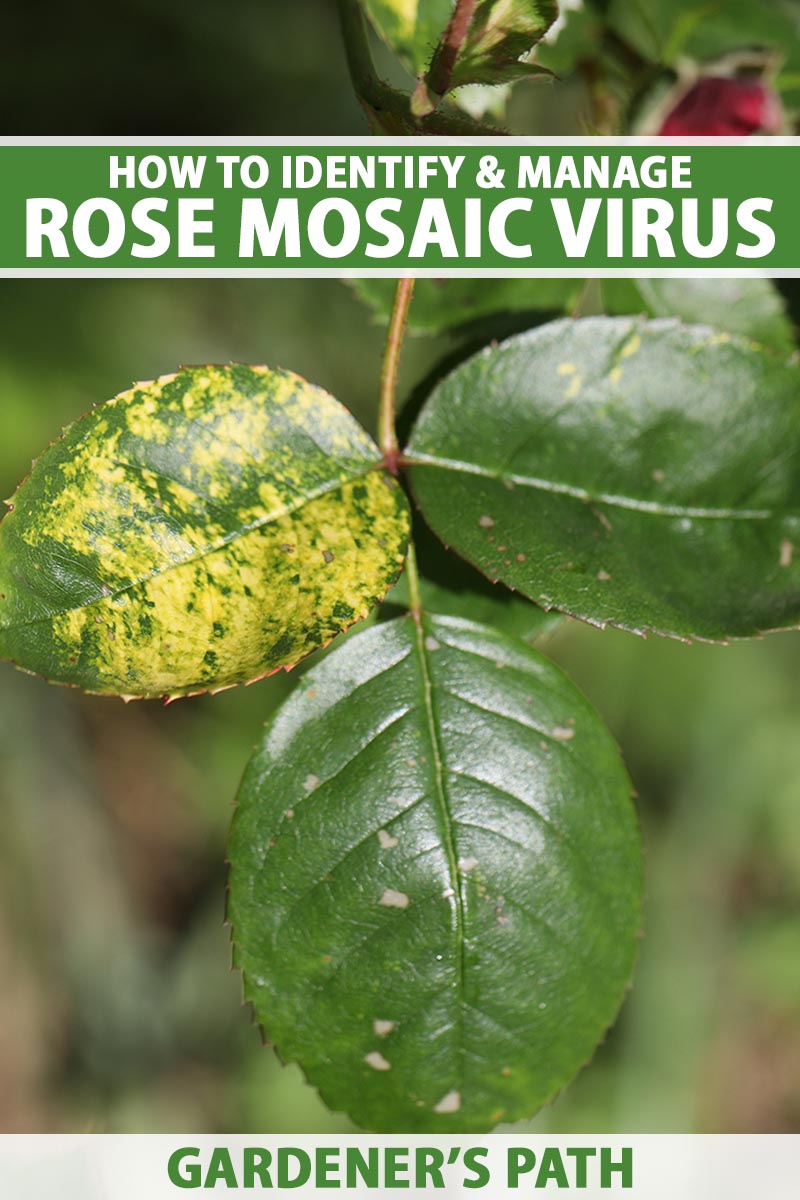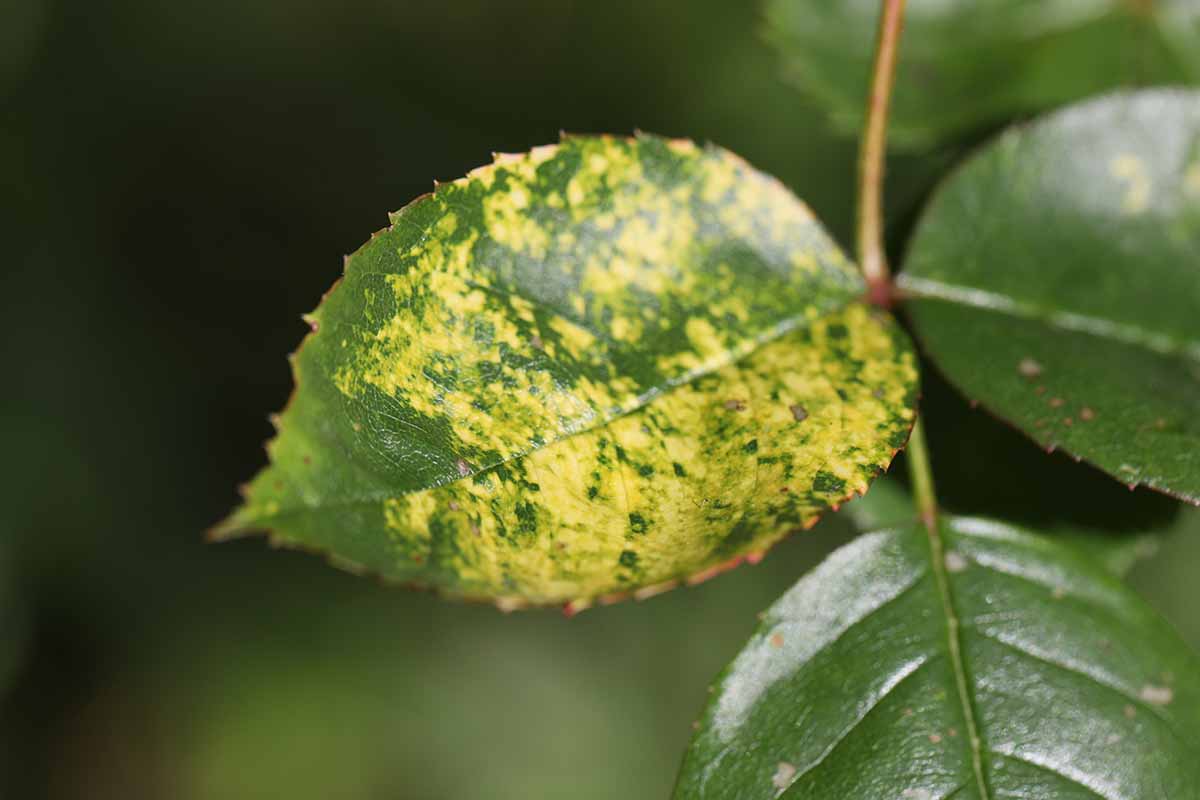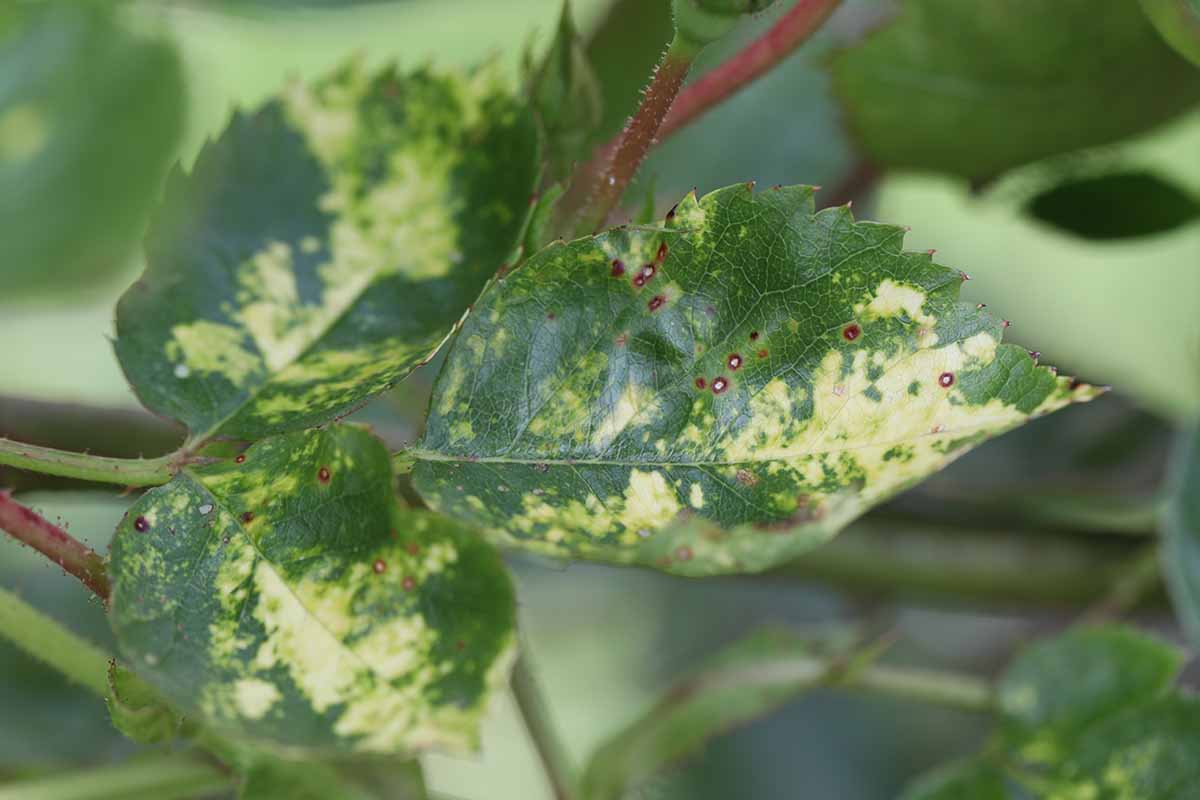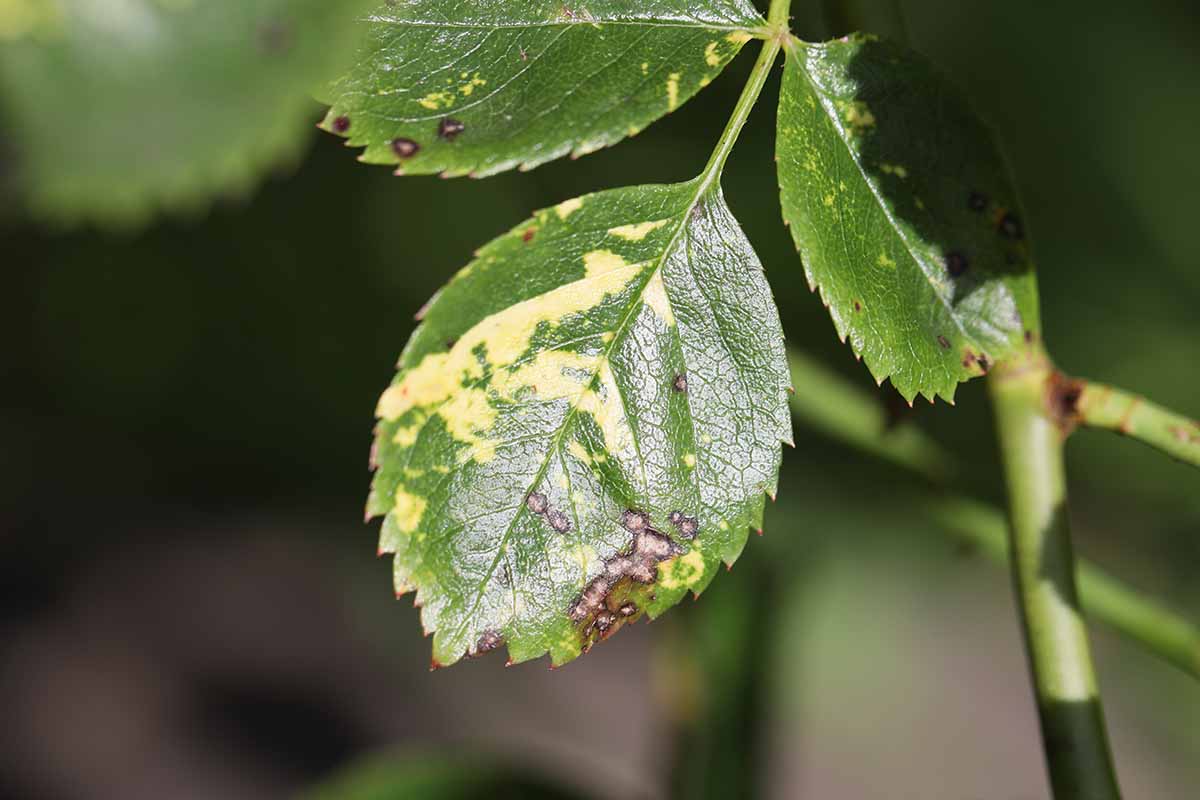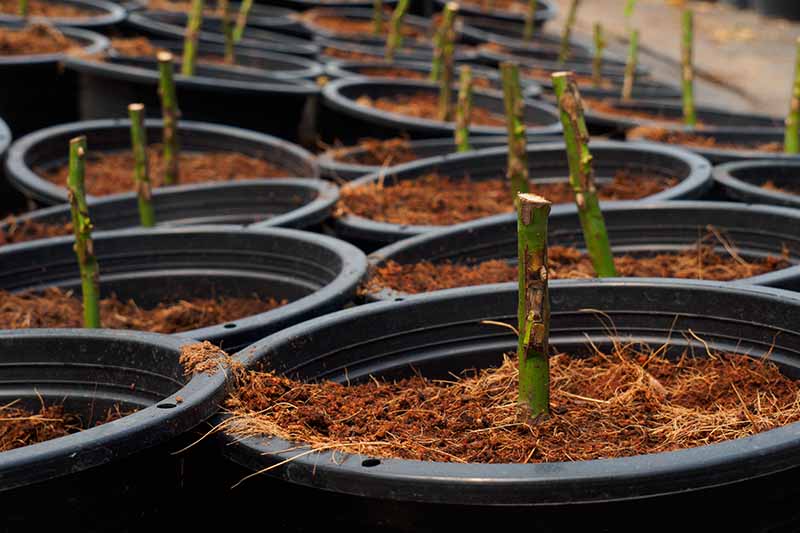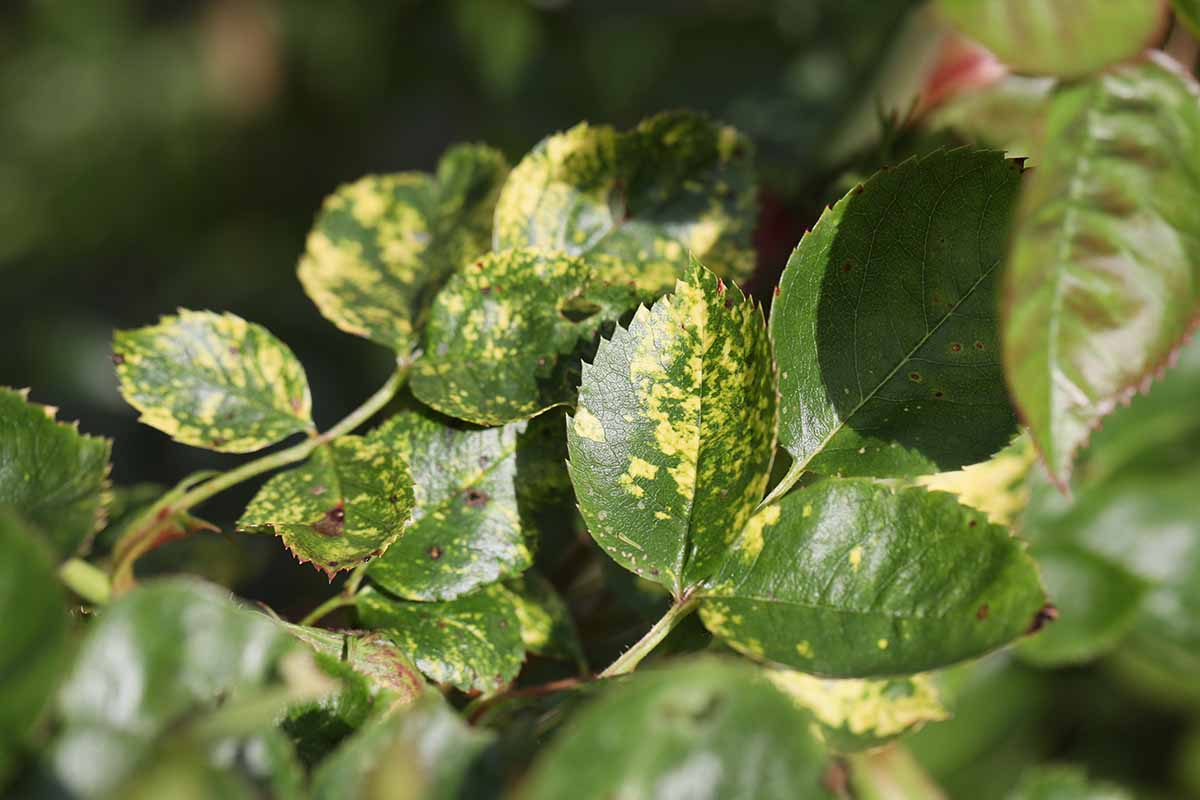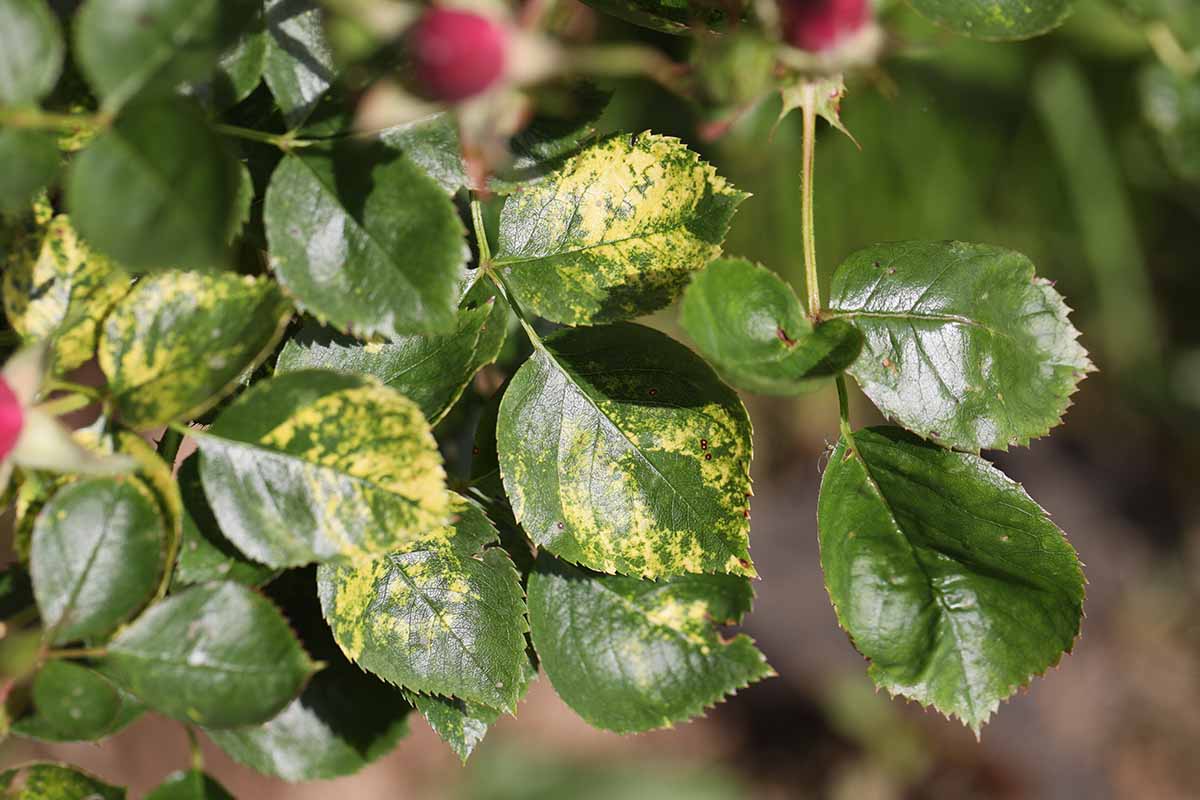Rose mosaic sucks. It does cause some interesting patterns in the leaves and flower petals of Rosa species, but it also causes these plants to fail to bloom, and can even contribute to their demise. Oh, and there is no cure. We link to vendors to help you find relevant products. If you buy from one of our links, we may earn a commission. Don’t panic. You aren’t completely at the mercy of this widespread viral disease. We’re going to arm you so you know what to look for and what to do if this problem comes to visit. Up ahead, here’s what we’ll discuss: A little knowledge can go a long way towards limiting the damage that diseases can do in your garden. With that in mind, let’s dig in.
What Is Rose Mosaic Virus?
What we refer to as rose mosaic is actually several different viral diseases. Roses can be infected by apple mosaic virus (ApMV), Arabis mosaic virus (ArMV), and Prunus necrotic ringspot virus (PNRSV). Collectively, we call these Rose Mosaic Virus Complex (RMVc). It doesn’t matter which virus is causing the problem or if all three have attacked your plant at once. The symptoms are similar and the treatment is the same, so don’t get hung up on figuring out which is which. This is one of the most common diseases of roses in North America, so don’t panic if you find it in your garden. It happens to all of us at some point.
Symptoms
Sometimes RMVc is as obvious as a big neon sign blinking “mosaic virus ahead.” And sometimes it’s much more difficult to diagnose. The symptoms are mottled leaves and foliage with yellow circles, lines, zig-zags, or patches. Sometimes you’ll even see squiggly yellow lines, and these look a lot like some sort of insect damage. You might also see watermarking, which is a faint yellow swirl, or an oak-leaf pattern, with a shape similar to the leaves of those well-known trees. The flower petals can also be mottled. You can tell the viral disease apart from other diseases that cause similar symptoms in a few ways. Symptoms usually show up in the spring though they may sometimes appear in fall. The impacted growth is often covered up by new foliage as the season progresses. Evidence of infection typically only shows up in one section of the plant though the virus is systemic, meaning it will be present throughout the entire thing. In addition to the unusual yellow pattern, the shrub may exhibit stunted growth, may have reduced blossoming or none at all, and might be more susceptible to frost damage, with deadened stems or brown foliage after a frost. Some plants might be killed entirely after a particularly cold winter.
How RMVc Spreads
Fortunately, this disease doesn’t spread on tools and it isn’t transmitted by insects. It gets around when breeders take grafts, cuttings, or budding from infected plants. The bad news is that the symptoms might not show up for years, and it often doesn’t show up at all until after a rose is planted into the garden. That means breeders could be using an infected potted plant for a breeding program without even knowing it. Testing is available to help figure out if a plant is carrying the disease, but home breeders and smaller operations can’t necessarily afford to check every new creation, and some larger breeders don’t go to the effort. The virus can be spread via pollen in other species, but this doesn’t appear to be the case with roses. We do know that it doesn’t spread from plant to plant in a garden setting.
How to Treat It
There’s no cure or effective treatment for RSVc. You can prune away the ugly parts, but it won’t reduce the infection. This just makes the infected plant look prettier for the time being, until new symptoms develop on other parts. If an ailing plant that you’re growing is too weak, doesn’t flower well, or is consistently damaged by frost, it’s probably best to pull it and buy a new plant. The good news is that you can buy certified disease-free plants. Just look at the label. Growers who test are proud to show off their safe practices, so they’ll make sure to include that info on the label. With no cure, it means you might have to say goodbye to a cherished shrub. Even worse, you won’t even be able to take a cutting to try and reproduce a beloved plant because this will just spread the disease. But you might just be able to live with it, and when you purchase plants in the future, just make sure they’re certified RMVc-free. Are you dealing with this disease in your garden? What symptoms are you seeing on your plants? Let us know in the comments. We hope this guide set you in the right direction for improving your garden. If so, you might be interested in a few of our other rose growing guides, such as:
Growing Roses 101: Getting StartedHow to Identify and Treat Common Rose DiseasesHow to Prevent and Control Rose Rosette Disease (Witches’-Broom)7 Common Reasons Why Roses Drop Their Leaves
